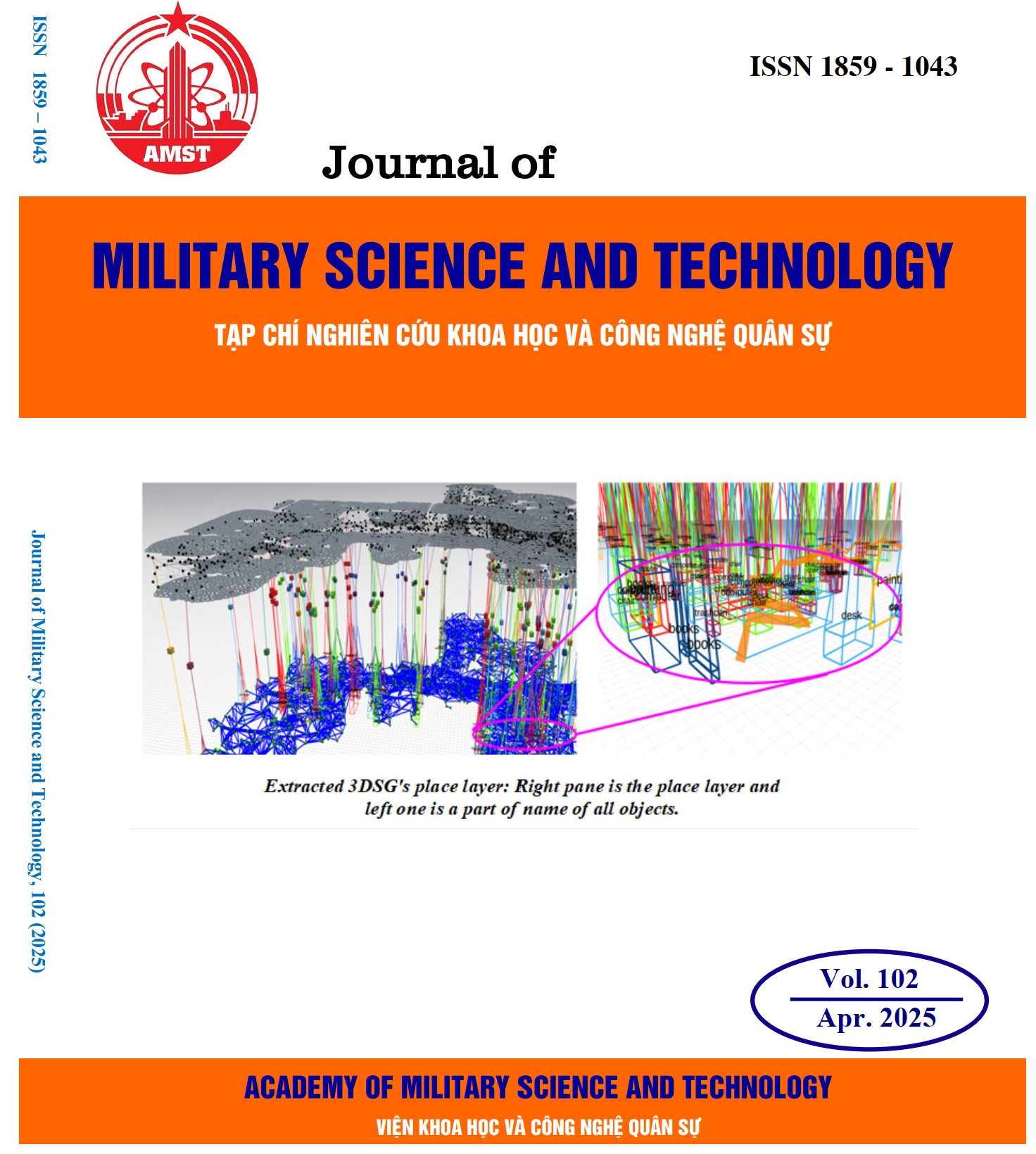Optimal sizing of battery energy storage systems considering degradation and replacement in microgrids
443 viewsDOI:
https://doi.org/10.54939/1859-1043.j.mst.102.2025.41-50Keywords:
BESS; Microgrid; MINLP; Renewable resources.Abstract
In recent years, the integration of Battery Energy Storage Systems (BESS) has played a crucial role in ensuring the reliability and efficiency of microgrids. This paper presents an optimal sizing model for BESS, considering operational degradation and replacement over the system's lifecycle. The proposed model integrates technical, economic, and environmental aspects in the operation of microgrids, while also accounting for the degradation rate of batteries. A Mixed-Integer Nonlinear Programming (MINLP) approach is used to minimize the total system cost, including investment, operation, and replacement costs, while satisfying constraints related to load demand, renewable energy integration, and system reliability. Simulation results demonstrate that the proposed optimal model is highly effective in determining both the capacity and installation cost of the energy storage system. Additionally, the model can support the development of efficient operation scheduling and management strategies for BESS.
References
[1]. P. V. Subbotin, Y. P. Gusev, and D. V. Dvorkin, “Optimal BESS Sizing & Allocation for Transfer Capacity Increase in Distribution Grids”, in 2020 3rd International Colloquium on Intelligent Grid Metrology (SMAGRIMET), Cavtat, Dubrovnik, Croatia: IEEE, pp. 1–6, (2020). doi: 10.23919/SMAGRIMET48809.2020.9263996 DOI: https://doi.org/10.23919/SMAGRIMET48809.2020.9263996
[2]. S. Jayashree and K. Malarvizhi, “Methodologies for Optimal Sizing of Battery Energy Storage in Microgrids : A Comprehensive Review”, in 2020 International Conference on Computer Communication and Informatics (ICCCI), Coimbatore, India: IEEE, pp. 1–5, (2020). doi: 10.1109/ICCCI48352.2020.9104131 DOI: https://doi.org/10.1109/ICCCI48352.2020.9104131
[3]. M. Amini, M. H. Nazari, and S. H. Hosseinian, “Optimal Scheduling and Cost-Benefit Analysis of Lithium-Ion Batteries Based on Battery State of Health”, IEEE Access, vol. 11, pp. 1359–1371, (2023), doi: 10.1109/ACCESS.2022.3232282 DOI: https://doi.org/10.1109/ACCESS.2022.3232282
[4]. M. Amini, A. Khorsandi, B. Vahidi, S. H. Hosseinian, and A. Malakmahmoudi, “Optimal sizing of battery energy storage in a microgrid considering capacity degradation and replacement year”, Electr. Power Syst. Res., vol. 195, p. 107170, (2021), doi: 10.1016/j.epsr.2021.107170 DOI: https://doi.org/10.1016/j.epsr.2021.107170
[5]. A. M. Alharbi, I. Alsaidan, and W. Gao, “Sizing Li-ion BESS for Participation in Ancillary Services With Consideration of Degradation Cost”, in 2022 IEEE Kansas Power and Energy Conference (KPEC), Manhattan, KS, USA: IEEE, pp. 1–6, (2022). doi: 10.1109/KPEC54747.2022.9814738 DOI: https://doi.org/10.1109/KPEC54747.2022.9814738
[6]. S.-M. Chen, M.-W. Yang, and L.-W. Lee, “A new method for fuzzy multiple attributes group decision making based on ranking interval type-2 fuzzy sets”, in 2011 International Conference on Machine Learning and Cybernetics, Guilin, China: IEEE, pp. 142–147, (2011). doi: 10.1109/ICMLC.2011.6016692 DOI: https://doi.org/10.1109/ICMLC.2011.6016692
[7]. H. Xie, X. Teng, Y. Xu, and Y. Wang, “Optimal Energy Storage Sizing for Networked Microgrids Considering Reliability and Resilience”, IEEE Access, vol. 7, pp. 86336–86348, (2019), doi: 10.1109/ACCESS.2019.2922994 DOI: https://doi.org/10.1109/ACCESS.2019.2922994
[8]. A. Khodaei, and M. Shahidehpour, “Microgrid-based co-optimization of generation and transmission planning in power systems,” IEEE Trans. Power Syst., vol. 28, no. 2, pp.1582-1590, (2013). DOI: https://doi.org/10.1109/TPWRS.2012.2224676
[9]. F. F. Nicolosi, J. C. Alberizzi, C. Caligiuri, and M. Renzi, “Unit Commitment Optimization of A Micro-Grid With A MILP Algorithm: Role Of The Emissions, Bio-Fuels And Power Generation Technology,” Energy Rep., vol. 7, pp. 8639–8651, (2021), doi: 10.1016/j.egyr.2021.04.020 DOI: https://doi.org/10.1016/j.egyr.2021.04.020
[10]. Nguyen Quoc Minh, Nguyen Duy Linh, Nguyen Trong Khiem, “A mixed-integer linear programming model for microgrid optimal scheduling considering BESS degradation and RES uncertainty,” Journal of Energy Storage, Vol. 104, Part B, pp. 114663, (2024). DOI: https://doi.org/10.1016/j.est.2024.114663
[11]. Y. Yang, H. Li, A. Aichhorn, J. Zheng, and M. Greenleaf, “Sizing Strategy of Distributed Battery Storage System with High Penetration of Photovoltaic for Voltage Regulation and Peak Load Shaving”, IEEE Trans. Smart Grid, vol. 5, no. 2, pp. 982–991, (2014), doi: 10.1109/TSG.2013.2282504 DOI: https://doi.org/10.1109/TSG.2013.2282504
[12]. J. Muehlenpfordt, “Time series”. Open Power System Data, (2019). doi: 10.25832/TIME_SERIES/2019-06-05







